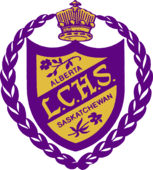Administrative Procedure 402
Employee Harassment
Background
The Lloydminster Public School Division believes that all of its employees have the right to work in a safe environment and shall make every reasonable effort to provide work environments that are free from physical attack, verbal abuse, or other harassment. Workplace harassment and bullying will not be tolerated. Lloydminster Public School Division will take all reasonable steps to prevent harassment and bullying in the workplace. Complaints of harassment and/or bullying will be dealt with promptly, objectively, and in compliance with this procedure, the Saskatchewan Human Rights Code, the Saskatchewan Occupational Health and Safety legislation, and all applicable collective agreement provisions.
Procedures
- Whenever possible, an employee who believes that they have been harassed, should make every reasonable effort to resolve the issue by direct discussion with the offending individual, requesting the offending activity to stop. Should the result of this informal approach be unsatisfactory to the complainant, then a formal resolution process may proceed.
- An employee who believes that the offending behaviour/incident has not been satisfactorily resolved may refer the matter to their immediate supervisor. The employee is encouraged to document the occurrence(s), time(s), and the names of witnesses. In consultation with the Superintendent of Education, the supervisor will attempt to resolve the complaint through a resolution process which may include, coaching, supervision strategies, critical conversations, and facilitation. The supervisor must document the incident and keep all notes related to the investigation and resolution in a secure location. If the situation remains unresolved, the supervisor shall notify the Director of Education.
- The Director of Education, shall appoint impartial and trained individual(s) to perform a preliminary investigation of the complaint, report findings and recommendations for further investigation to the Superintendent of Education. If deemed appropriate, the Director of Education may engage the services of an external investigator.
- Should the investigation conclude that the perpetrator(s) of the incident(s) of harassment is (are) an employee(s), disciplinary action shall be in accordance with the applicable collective agreement.
- Affected employees shall be informed of the results of the investigation.
- Notwithstanding the above procedures, an employee who believes that they have been subject to harassment may, at any time, seek legal advice or counsel from their employee group or from an independent source at the said employee's expense. Should the employee so wish, the employee may be accompanied by, or represented by, a representative of the appropriate employee group at any and all meetings that the employee attends regarding this process.
- An employee who believes that they have been the victim of harassment may, at any time, contact the police, an officer of the Occupational Health and Safety Division, Saskatchewan Labour, or file a complaint in accordance with the provisions of the Saskatchewan Human Rights Code.
- In dealing with allegations of harassment, confidentiality shall be maintained by all persons involved, to the maximum extent possible. The name of the complainant or the alleged harasser or the circumstances related to a complaint, shall not be disclosed to any person except where the disclosure is necessary for the purposes of investigating the complaint or taking corrective action with respect to the complaint, or as required by law.
- In the event the steps set out in the above procedures do not resolve the issue, the employee may request a meeting with the Board of Education.
Definitions
Personal harassment - is any objectionable behaviour, comment, or display directed at another based on, but not limited to gender, race, or place of origin, physical appearance, age, sexual orientation, or disability. Examples of such harassment may include unwanted physical contact, inappropriate jokes or teasing, display of derogatory materials, or conduct which may reasonably cause hurt, humiliation, or awkwardness so as to negatively affect an individual’s well being, work relationships, or job performance.
Reference
Section 85, 87, The Education Act, 1995
Human Rights Act
Occupational Health and Safety Act
Canadian Charter of Rights and Freedoms
STF Code of Ethics
Revised
January 2015
August 2023





























